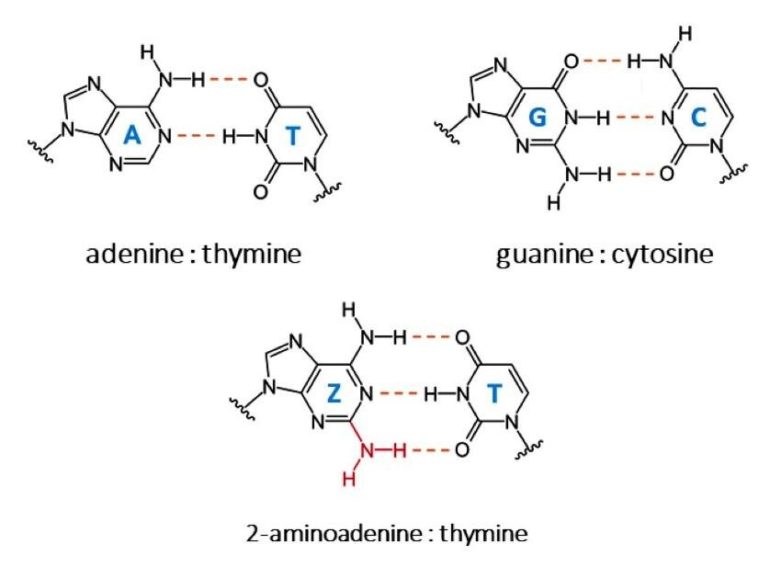DNA is composed of nucleobases represented by the letters A, T, G and C. They form the basis of the genetic code and are present in all living beings. But in a bacteriophage, another base, represented by the letter Z, exists. This exception, the only one observed to date, has long remained a mystery. Scientists from the Institut Pasteur and the CNRS, in collaboration with the CEA, have now elucidated the biosynthesis pathway of this base. This work has been published in the April 30th, 2021 issue of Science.
DNA, or deoxyribonucleic acid, is a molecule that serves as the medium for storing genetic information in all living organisms. It is a double helix characterized by alternating purine nucleobases (adenine and guanine) and pyrimidine nucleobases (cytidine and deoxycytidine). The bases of each DNA strand are located at the center of the helix and are bonded together, thereby linking the two DNA strands: adenine forms two hydrogen bonds with thymine (A-T), and guanine forms three hydrogen bonds with cytosine (G-C). This applies to all living beings, with one exception.
Cyanophage S-2L, an exception to conventional genetics
Cyanophage S-2L is a bacteriophage, in other words a virus that infects bacteria. In this phage, adenine is completely replaced by another base, 2-aminoadenine (represented by the letter Z). The latter forms three hydrogen bonds with thymine (Z-T), instead of the usual two bonds between adenine and thymine. This higher number of bonds increases the stability of the DNA at high temperatures and changes its conformation, meaning that the DNA is less well recognized by proteins and small molecules
2-aminoadenine biosynthesis pathway elucidated
Since it was discovered in 1977, cyanophage S-2L has been the only known exception, and the biosynthesis pathway of 2-aminoadenine has remained unknown. Scientists from the Institut Pasteur and the CNRS, in collaboration with the CEA, recently elucidated this biosynthesis pathway and demonstrated its enzymatic origins. They achieved this by identifying a homolog of the known enzyme succinoadenylate synthase (PurA) in the genome of cyanophage S-2L. A phylogenetic analysis of this enzyme family revealed a link between the homolog, known as PurZ, and the PurA enzyme in archaea. This indicates that the homolog is an ancient enzyme that probably conferred an evolutionary advantage. The research was carried out using the Institut Pasteur’s Crystallography Platform.
The new Z-T base pair and the discovery of the biosynthesis pathway show that new bases can be enzymatically incorporated into genetic material. This increases the number of coding bases in DNA, paving the way for the development of synthetic genetic biopolymers.
Searching for the chemistry of life
More information:
Dona Sleiman et al, A third purine biosynthetic pathway encoded by aminoadenine-based viral DNA genomes, Science (2021). DOI: 10.1126/science.abe6494
Citation:
Biosynthesis pathway of a new DNA nucleobase elucidated (2021, July 9)
retrieved 10 July 2021
from https://phys.org/news/2021-07-biosynthesis-pathway-dna-nucleobase-elucidated.html
This document is subject to copyright. Apart from any fair dealing for the purpose of private study or research, no
part may be reproduced without the written permission. The content is provided for information purposes only.



